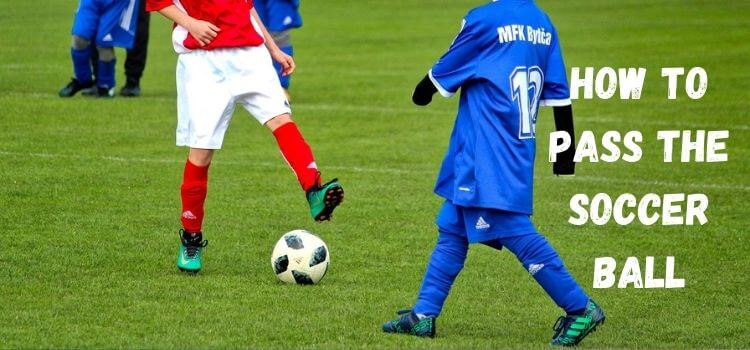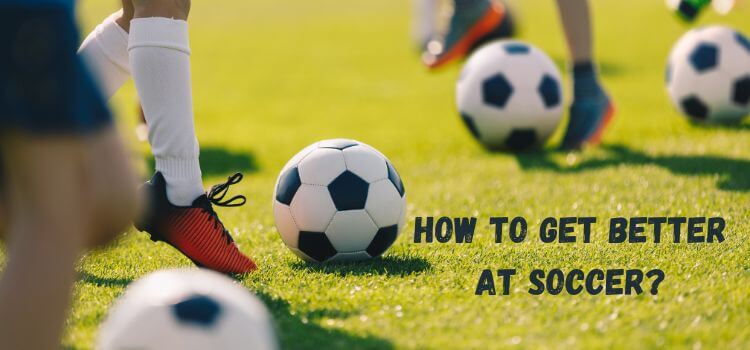As an Amazon Associate, I earn from qualifying purchases
Passing is the lifeblood of soccer. The fundamental skill keeps the game flowing, connecting players and creating opportunities. Making progress in passing can improve your performance regardless of experience level. This guide will take you through everything you need to know to pass the soccer ball easily.

Understanding the Basics
What is a Pass in Soccer?
A pass in soccer is kicking the ball to a teammate. It’s a core part of the game, allowing teams to advance the ball up the Field, maintain possession, and set up scoring opportunities.
Different Types of Passes
There are several types of passes, each suited for different situations on the Field:
- Short Passes: Quick and accurate, used for close-range play.
- Long Passes: Cover greater distances to switch the play or launch attacks.
- Through Passes: Played into space for a teammate to run onto.
- One-Touch Passes: Played quickly without stopping the ball, keeping the Momentum.
Preparing for the Pass
Proper Body Position
It is crucial to get your body in the correct position. Face your target with your body slightly angled, ensuring you can see both the ball and your teammate.
Foot Placement
For a solid pass, place your non-kicking foot beside the soccer ball. This helps with balance and direction.
Types of Passes
Short Passes
These are the bread and butter of soccer, used to maintain possession and create plays. They are usually made with the inside of the foot for accuracy.
Long Passes
Long passes are used to switch play or reach teammates further up the Field. These require more power and are often made with the instep (laces) of the foot.
Through Passes
Through passes are all about timing and precision. They are played into space, allowing a teammate to run onto the ball.
One-Touch Passes
One-touch passes keep the game fast-paced and can catch opponents off guard. They require quick decision-making and accurate touch.
Mastering Short Passes
Inside Foot Pass Technique
To master short passes:
- Use the inside of your foot.
- Keep your ankle locked.
- Follow through towards your target.
Weight and Accuracy
The key to an excellent short pass is getting the right weight. Too much force and it overshoots; too little and it falls short. Practice makes perfect.
Executing Long Passes
Using the Laces
For long passes:
- Strike the ball with your laces.
- Keep your foot firm.
- Follow through to generate power.
Generating Power and Distance
Long passes need more power. Use your whole body to generate Momentum and ensure a smooth, powerful strike.
Perfecting Through Passes
Timing and Vision
Through passes rely on impeccable timing. Watch your teammates run and play the ball into the space they’re moving into.
Leading Your Teammate
A good through pass leads your teammate, giving them the advantage over defenders.
One-Touch Passing
Quick Decision Making
One-touch passes are all about speed. Please decide before the ball arrives, and use your first touch to play it accurately.
Maintaining Momentum
These passes help maintain the game’s flow, keeping the opponent on their toes and your team in control.
Common Mistakes and How to Avoid Them
Misjudging Distance
Practice helps with judging distances. Use cones or markers to simulate real-game situations.
Incorrect Foot Placement
Always ensure your non-kicking foot is placed correctly to guide your pass.
Over-hitting or Under-hitting the Ball
Adjust your power based on the distance. Practice different levels of force to find the right balance.
Training Drills for Effective Passing
Passing Drills for Accuracy
Set up targets and practice hitting them. Cones, small goals, or even just marked areas can help.
Drills to Improve Power and Distance
Work on long passes by setting targets at varying distances. Practice delivering accurate and forceful blows to the ball.
Combination Drills
Combine different types of passes in one drill. For example, a short pass followed by a long pass, then a through pass.
Passing Under Pressure
Staying Calm
Stay composed under pressure. Keep your eye on the ball and your options open.
Quick Thinking and Decision Making
The faster you can make decisions, the more effective your passing will be under pressure.
Building Team Chemistry
Communication on the Field
Good communication makes passing easier. To communicate with teammates, use hand signals and spoken cues.
Understanding Teammates’ Movements
Know your teammates’ tendencies and movements. This helps you anticipate where they’ll be and make better passes.
Advanced Passing Techniques
The Backheel Pass
This stylish pass can be effective in tight spaces. Use your heel to flick the ball to a teammate behind you.
The Chip Pass
A chip pass lifts the soccer ball over opponents, which helps break through defenses.
The Outside Foot Pass
This pass uses the outside of the foot, ideal for quick changes in direction.
Improving Your Passing with Technology
Using Video Analysis
Record your practice sessions and games. Analyze your passing technique and identify areas for improvement.
Apps and Gadgets for Soccer Training
Various devices and apps can track your passing accuracy, power, and technique. Use these tools to enhance your training.
Conclusion
Soccer requires passing, a crucial ability that learning can significantly enhance your play. From understanding the basics to practicing advanced techniques, every aspect of passing requires attention and practice. Remember to stay calm under pressure, communicate effectively with your teammates, and use technology to your advantage. Keep practicing, and you’ll see improvement in no time.
FAQs
The most effective type of pass depends on the situation. Short passes are great for maintaining possession, while long passes can switch play quickly. Through passes create scoring opportunities, and one-touch passes keep the game fast-paced.
Practice is key. Use drills that focus on hitting targets and maintaining the correct technique. Additionally, video analysis can assist in locating and fixing any mistakes in your form.
Practice hitting targets with force and accuracy by setting them up at different distances. Focus on using your laces and following through correctly.
Communication is crucial. It helps coordinate movements, anticipate passes, and maintain team chemistry on the Field.
Yes, technology can provide valuable insights into your performance. You may measure your progress and identify areas for growth by using apps and gadgets that track power, technique, accuracy, and other metrics.
Read Our More Articles
- Does Soccer Have Cheerleaders? The Answer May Surprise You!
- What is a Cross in Soccer? A Comprehensive Guide
- How to Cross the Ball in Soccer Like a Pro?
As an Amazon Associate, I earn from qualifying purchases


